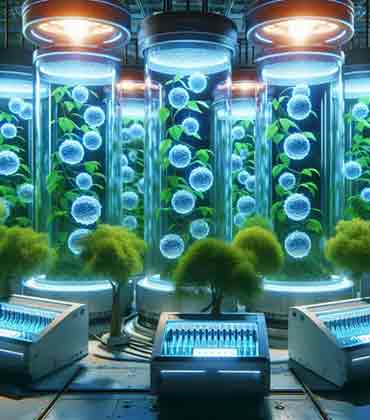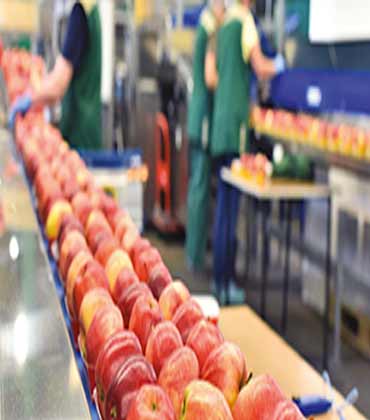THANK YOU FOR SUBSCRIBING
By Todd Jongen, Director Non-Foods Product Development and Packaging Science, US Foods
A Brief History of Carry-Out Food Packaging
By Robert Erhard, Head of Dairy, Corporate Sustainable Agricultural Development, Nestle
Transforming the Food Industry Through a Sustainable...

Enhancing and elevating supply chain food safety: The requirements of onsite audits
Takashi Nakamura, Vp Of Food Safety And R&D, Fresh Del Monte

 Takashi Nakamura, Vp Of Food Safety And R&D, Fresh Del Monte
Takashi Nakamura, Vp Of Food Safety And R&D, Fresh Del MonteIt depends. As a student in an MBA program, during a regulatory course, a question was posed to the professor who was also a practicing attorney. I don’t remember the question, but when answering the student’s question on what action should be taken, the professor answered, it depends. This is the same answer I give when ensuring the vetting and validating of the various suppliers we use at our facilities around the world - service providers, growers, processors, and packers.
The supply chain web has become increasingly complex, and in the world of produce where we work with a product with timelines that are in terms of days, any disturbance can be crippling to the business. To add to the complexity, GFSI schemes are undergoing enhancements and evolution more frequently, and audits by the government, customer, and second and third-party groups are also undergoing similar radical enhancements and improvements.
We often hear of the term ‘risk assessment’, the application, and its use as a decision-making tool. At one end of the spectrum of risk is reviewing and approving documentation, reports, certificates, or licenses, in lieu of on-site audits. The other end of the spectrum is a more rigorous and disciplined approach to validation which includes a high level of on-site assessments and audits. In my view, this is too myopic of a view of risk assessment. To truly assess the risk of any arrangement in the supply chain, other functions including - but not limited to legal, financial, and quality - should also be evaluated to ensure that the scope of the risk assessment is truly a network business decision and not based on solely food safety.
Transparency of business practices is not only to our consumers but internally to our business of key stakeholders.
In any business, the assurance that appropriate measures are in place to ensure transparency to all functions is a key component of risk assessment. Truly evaluating risk in the supply chain needs to be in partnership with many functions in an organization.
-42.jpg) For example, a contract with suppliers that has the appropriate provisions highlighting requirements of areas of food safety and quality ensures that the organization is protected and the supplier as well. Examples of appropriate provisions include the following;
For example, a contract with suppliers that has the appropriate provisions highlighting requirements of areas of food safety and quality ensures that the organization is protected and the supplier as well. Examples of appropriate provisions include the following;
• Required licenses and certificates that are valid and relevant for product line and customer requirements.
• Monitoring management which includes frequency and quantity of both unannounced and announced audits.
“Regardless of what risk assessment tool is to be used by an organization, one of the most important tools to be used in an assessment is on-site verification and validation”
• In cases where non-conformances are identified, specifying how quickly corrective actions need to be communicated and validating efficacy are some examples.
• In cases where non-conformance and time needed to correct could put the buyer in crisis mode to ensure supply to a customer, stating clearly what is the contingency plan from the supplier (but also developing redundancy in the internal strategic plan).
• Specifying specific test types and frequencies.
Other considerations to include are the following – location or country of origin of services and products, type of product (has there been recent recalls, regions, etc.), processed foods, and condiments (as shelf life can be in commerce at various levels for extended periods). There are many great risk assessment tools available out there today from pre-harvest through packing. Which one works best for an organization is one of trial and error, and constant communication and engagement with your food safety team as well as cross-functionally.
Regardless of what risk assessment tool is to be used by an organization, one of the most important tools to be used in an assessment is on-site verification and validation. As an example, when documents have been presented on the training of harvesting good manufacturing practices, interviewing some of the field workers to demonstrate their acknowledgment and understanding of the training is key to ensuring the ‘stickiness’ of training. By that, I mean it’s clearly understood the “why/what/when”. One way of deploying this is to request some field workers to show how they wash their hands. It’s the simple tasks that can illuminate the efficacy and understanding of food safety training programs.
In North America alone, the fields that are harvested for produce are in the millions. It is simply unrealistic from standpoint of resources to do on-site audits of all the fields that an organization pulls from. Each organization must do its cost/benefit analysis across multiple functions, not just food safety but also to ensure appropriate alignment and support for critical on-site assessments.
The next 10 years in our industry will see an explosion of technologies that enable faster, more accurate, and more effective tools to analyze fields, and the field training that our agricultural workers get. It is an exciting time to be in the agricultural field as consumers expect more from our industry, and our next leaders in this area prepare us for an even more expansive, a year around healthy menu of produce. Risks will still exist in our industry, and the appropriate allocation of resources against risks will continue to be challenging. And, what we do about it, it depends.
Read Also















